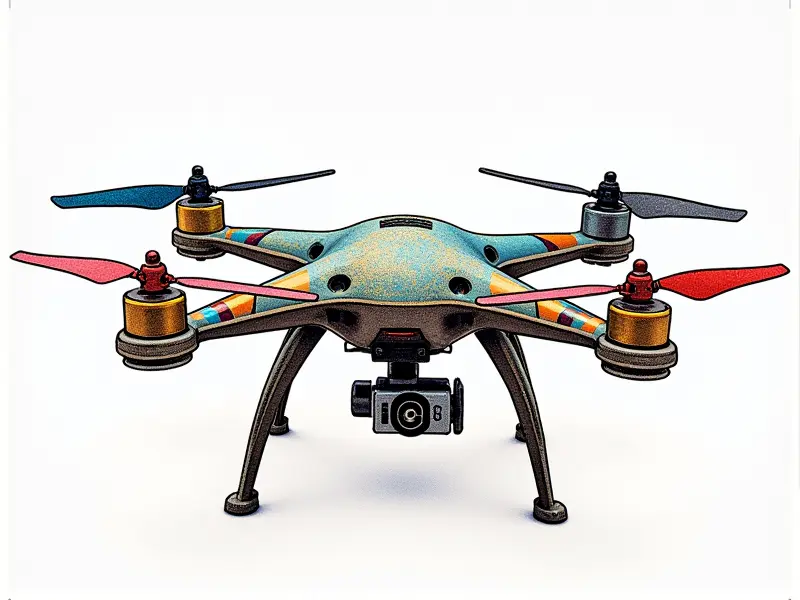How does an FPV VTX work?

How Does an FPV VTX Function?
The FPV (First Person View) VTX, or Video Transmitter, is a critical component in drone racing and aerial photography. It enables the transmission of real-time video footage from the drone's camera to a ground-based receiver, giving pilots a bird’s-eye view of their flight path.
Understanding FPV VTX Technology
The technology behind an FPV VTX involves several key components: the transmitter itself, which sends out the video signal; the antenna that broadcasts it over radio waves; and the receiver on the ground that captures this signal. The VTX converts the analog or digital camera feed into a radio frequency (RF) signal for transmission.
There are two main types of FPV VTxs: Analog and Digital. Analog systems are simpler, cheaper, and widely used in beginner setups due to their ease of use. However, they can be susceptible to interference from other devices operating on the same frequencies. Digital systems offer better image quality, more reliable transmission over longer distances, and resistance to interference.
Demystifying FPV VTX for Beginners
For beginners diving into drone racing or aerial photography, understanding the basics of an FPV VTX is crucial. Key factors include:
- Frequency Band: Most commonly used bands are 5.8 GHz and 1.3 GHz.
- Power Output (mW): Determines the range of transmission, with higher mW offering longer ranges but also increased battery drain.
- Video Formats: Typically NTSC or PAL for analog systems; H.264, MPEG-4, and H.265 for digital systems.
Mastering FPV VTX Setup and Tuning
To optimize your FPV experience, proper setup and tuning of the VTX are essential:
- Tuning Frequency: Avoid using frequencies that interfere with other devices.
- Antenna Selection: Choose an antenna that matches the frequency band for maximum efficiency.
- Preset Configuration: Some VTxs come pre-configured, but custom settings can be adjusted to suit specific needs.
Exploring FPV VTX Capabilities
FPV VTxs offer a range of features that enhance the user experience:
- Multiple Channels: Allows for switching between different frequencies without losing signal.
- Voltage Regulation: Ensures stable performance despite varying battery levels during flight.
- Built-in Oscilloscope: Some advanced models include tools to monitor and troubleshoot the RF signal in real-time.
What You Need to Know About FPV VTX
To get started with an FPV VTX, it's important to understand its role within a broader system:
- Compatibility: Ensure the VTX is compatible with your drone and video receiver.
- Battery Life Impact: Higher power outputs consume more battery power; balance range vs. flight time carefully.
- Signal Quality: Good signal quality ensures a clear, lag-free view from the camera feed to the goggles or monitor.
How FPV VTX Enhances Drone Racing
In drone racing, an FPV VTX is not just a tool but a competitive advantage. It allows pilots to:
- Navigate Complex Courses: See obstacles and tight turns in real-time.
- Maximize Speed and Agility: Quick reactions depend on clear, lag-free video transmission.
- Improve Strategy: Real-time feedback helps refine racing techniques and strategies.
Inside the World of FPV VTX
The world of FPV VTxs is dynamic with constant advancements in technology. Innovations like:
- Diversity Antennas: Multiple antennas that improve signal strength and reliability.
- Broadband Transmission: Capabilities for wider frequency ranges to reduce interference issues.
- Advanced Error Correction: Features that minimize image degradation during transmission.
Simplified Guide to FPV VTX
To simplify the process of choosing and using an FPV VTX, consider these basic steps:
- Determine Your Needs: Define your use case (racing, photography) and required range.
- Select Frequency Band: Choose between 5.8 GHz or 1.3 GHz based on expected interference levels.
- Choose Power Output: Balance power output with battery life considerations.
Mastering the Art of FPV VTX
Mastery over an FPV VTX involves not just technical knowledge but also practical experience. Key skills include:
- Signal Troubleshooting: Identifying and resolving issues like signal dropouts or interference.
- Custom Configuration: Setting up custom frequencies for optimal performance in your specific environment.
- Ongoing Education: Keeping abreast of new technologies and trends in the FPV community.
Decoding FPV VTX Signals
To fully utilize an FPV VTX, understanding how signals are encoded and decoded is vital. This includes:
- Analog vs Digital Encoding: Each method has its strengths in terms of clarity, range, and interference resistance.
- Data Transmission Protocols: Understanding the protocols used for efficient data transfer between VTX and receiver.
- Error Correction Techniques: Advanced methods to maintain signal integrity over long distances or crowded frequency bands.
Conclusion
The FPV VTX is a cornerstone technology in drone racing and aerial photography, offering unparalleled real-time video transmission capabilities. By understanding its function, technology, setup requirements, and advanced features, users can enhance their flight experience significantly. Whether you're a beginner or an experienced pilot, mastering the art of using an FPV VTX opens up new horizons for exploration and competition.

